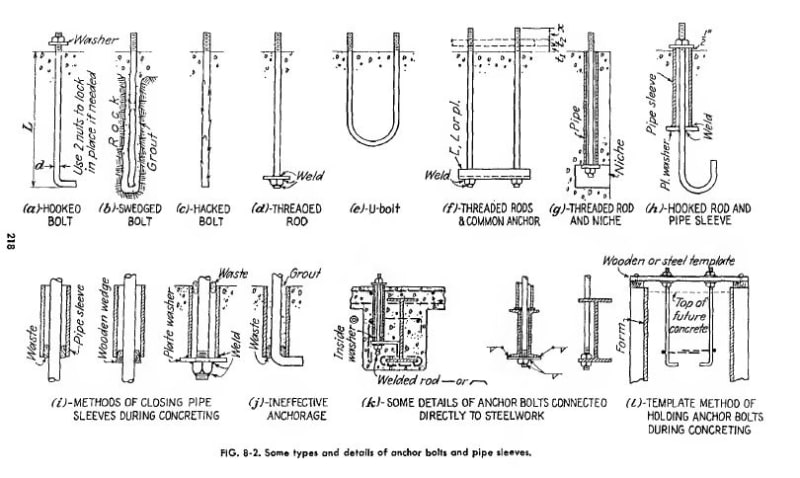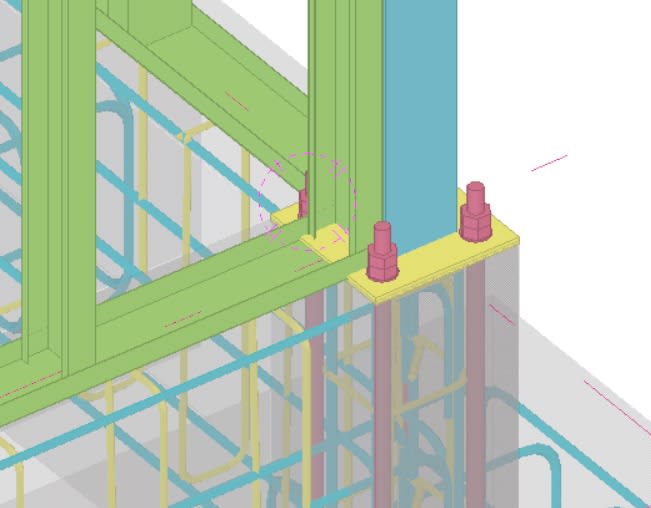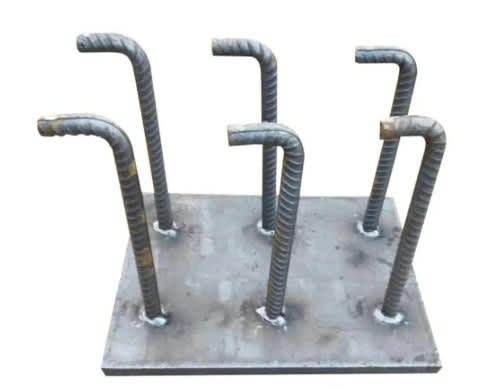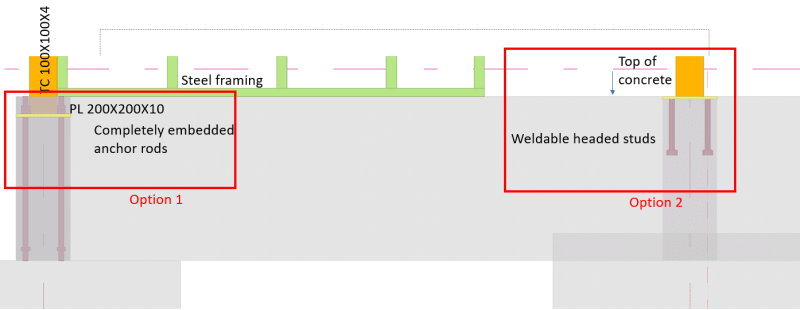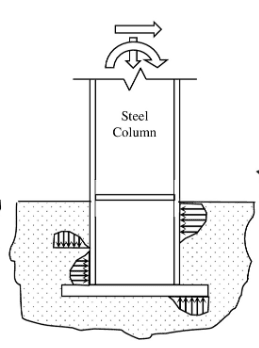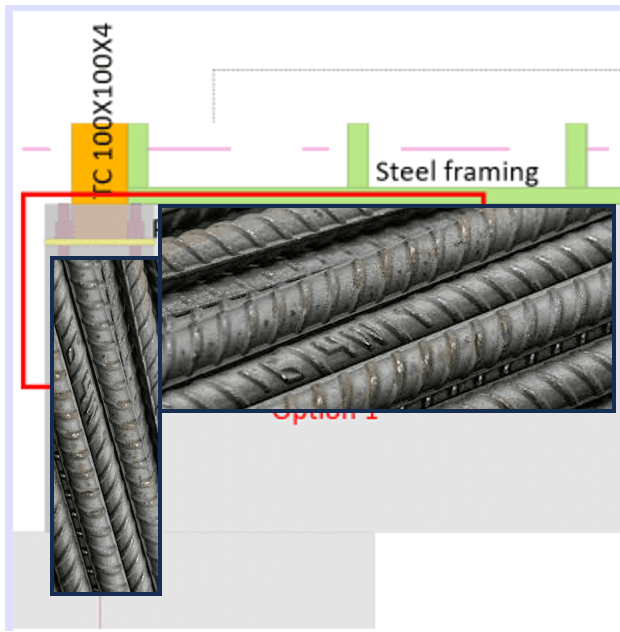Hi everyone,
I'm working on my first independent structural engineering job right after university. I have to design a 2-story steel house, using tubular sections for the columns and IPE sections for the beams. Initially, I was thinking of designing the base plate with 4 anchor rods, as I was taught in university. However, because we are using steel framing in the house, I'm forced to use a solution like the one in the picture, with hooked smooth bars. The architects told me that they use this solution often in houses, but I'm a little bit worried about how I should calculate the moment resistance of the insert. I'm thinking of using the classic resistance Mn for a beam and using the development length to estimate the length of the rebar.
I don't know if that is the right approach for designing that kind of insert, or if you suggest using another solution for the base plate. I also don't know if I should consider the base plate fixed in both directions depending on the distance between the inserts.
Excuse my English; it's not my first language, and it's a little bit rusty.
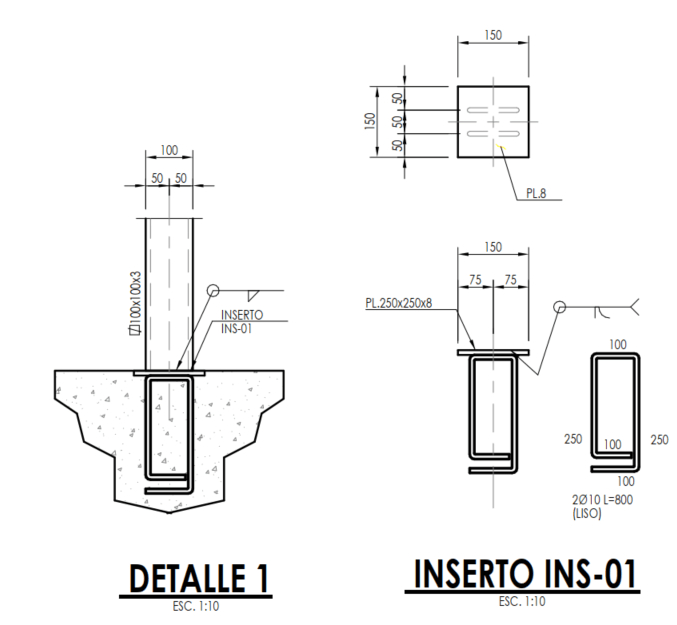
I'm working on my first independent structural engineering job right after university. I have to design a 2-story steel house, using tubular sections for the columns and IPE sections for the beams. Initially, I was thinking of designing the base plate with 4 anchor rods, as I was taught in university. However, because we are using steel framing in the house, I'm forced to use a solution like the one in the picture, with hooked smooth bars. The architects told me that they use this solution often in houses, but I'm a little bit worried about how I should calculate the moment resistance of the insert. I'm thinking of using the classic resistance Mn for a beam and using the development length to estimate the length of the rebar.
I don't know if that is the right approach for designing that kind of insert, or if you suggest using another solution for the base plate. I also don't know if I should consider the base plate fixed in both directions depending on the distance between the inserts.
Excuse my English; it's not my first language, and it's a little bit rusty.


